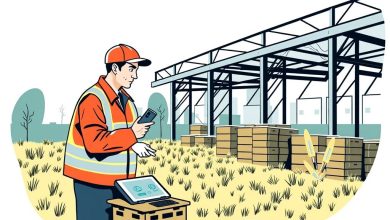Field Service Management with Geo-Fencing Enhancing Efficiency and Customer Satisfaction

Introduction
Field Service Management (FSM) is a critical component of modern business operations, particularly in industries such as HVAC, electrical work, plumbing, and home maintenance. As companies strive to provide efficient and effective services to customers, the integration of geo-fencing technology has revolutionized how field service teams operate. This article explores the concept of Field Service Management with Geo-Fencing, its benefits, implementation strategies, and best practices for maximizing efficiency and customer satisfaction.
What is Field Service Management?
Field Service Management refers to the process of managing and coordinating tasks performed by mobile workers outside of a traditional office environment. It involves scheduling appointments, dispatching technicians, tracking job progress, and ensuring timely completion of services. In today’s digital age, FSM has evolved beyond simple paper-based systems to sophisticated software solutions that leverage technology to streamline operations and improve overall performance.
Key Components of Field Service Management Software
Modern FSM software typically includes several essential features:
- Scheduling and Dispatch
- Job Management
- Resource Allocation
- Customer Relationship Management (CRM)
- Reporting and Analytics
These components work together to create a seamless experience for both field technicians and customers.
The Role of Geo-Fencing in Field Service Management
Geo-fencing is a location-based service that uses GPS, Wi-Fi, or cellular data to define geographical boundaries within which specific events or actions can be triggered. When applied to Field Service Management, geo-fencing technology enables businesses to create virtual perimeters around specific locations, such as customer properties or service areas.
Benefits of Geo-Fencing in FSM
- Improved Accuracy in Location Tracking
- Enhanced Security Measures
- Optimized Route Planning
- Increased Efficiency in Job Completion
- Better Customer Experience through Real-time Updates
By leveraging geo-fencing capabilities, field service companies can significantly enhance their operational efficiency and customer satisfaction levels.
How Geo-Fencing Works in Field Service Management
To implement geo-fencing in FSM, businesses typically use specialized software that integrates with GPS-enabled devices carried by field technicians. Here’s a step-by-step breakdown of the process:
- Define Virtual Boundaries
- Set Up Notifications and Alerts
- Monitor Technician Locations
- Trigger Actions Based on Location Changes
- Optimize Routing and Scheduling
This system allows managers to track technician movements, ensure they stay within designated areas, and receive real-time updates on job status.
Best Practices for Implementing Geo-Fencing in Field Service Management
While the integration of geo-fencing technology offers numerous advantages, successful implementation requires careful planning and execution. Here are some best practices to consider:
- Clearly Define Service Areas
- Train Technicians on New Technology
- Establish Clear Communication Channels
- Regularly Review and Update Geofences
- Ensure Data Privacy Compliance
By adhering to these practices, businesses can maximize the benefits of geo-fencing while minimizing potential drawbacks or challenges.
Case Study: XYZ Plumbing Company
To illustrate the practical application of Field Service Management with Geo-Fencing, let’s consider the example of XYZ Plumbing Company:
Background
XYZ Plumbing is a medium-sized plumbing service provider operating in a metropolitan area. They have traditionally relied on manual scheduling systems and paper-based job reports.
Challenges
- Inefficient dispatching leading to missed appointments
- Difficulty tracking technician locations during jobs
- Inconsistent communication with customers about estimated arrival times
Solution
XYZ implemented a FSM software solution integrated with geo-fencing technology. The system was deployed across all company vehicles and enabled technicians to use smartphones for real-time job updates.
Results
- Reduced no-show rates by 30%
- Improved first-time fix rate from 70% to 85%
- Decreased average job completion time by 25%
- Enhanced customer satisfaction scores by 40%
This case study demonstrates how the integration of Field Service Management with Geo-Fencing can lead to significant operational improvements and increased customer satisfaction.
Conclusion
Field Service Management with Geo-Fencing represents a powerful combination of technologies designed to optimize field operations and enhance customer experiences. By leveraging advanced software solutions and location-based services, businesses can streamline their processes, improve efficiency, and deliver higher quality services to their clients.
As the field service industry continues to evolve, companies that embrace these technologies will be well-positioned to compete effectively in an increasingly competitive market. Whether you’re a seasoned field service manager or just starting to explore these tools, understanding the principles and benefits of Field Service Management with Geo-Fencing can help you make informed decisions about how to best leverage these technologies for your business’s success.
Remember, the key to successful implementation lies not only in adopting new technologies but also in adapting your business practices to fully utilize these capabilities. By doing so, you’ll be able to provide more efficient, responsive, and cost-effective services to your customers, ultimately driving growth and profitability for your organization.




